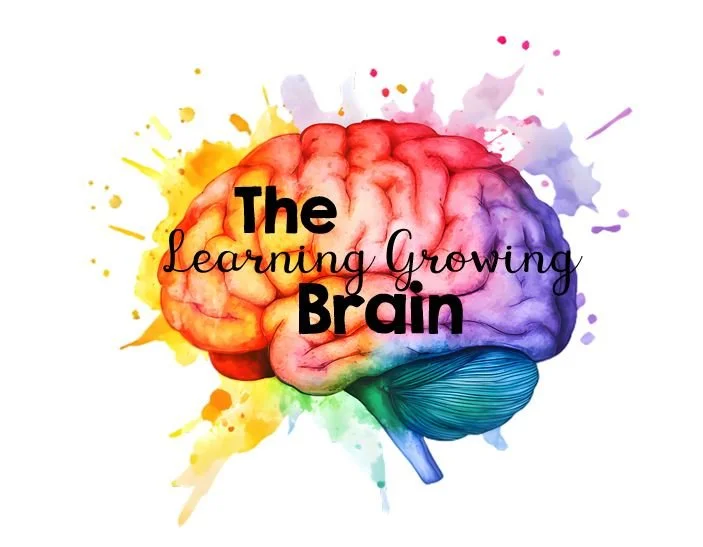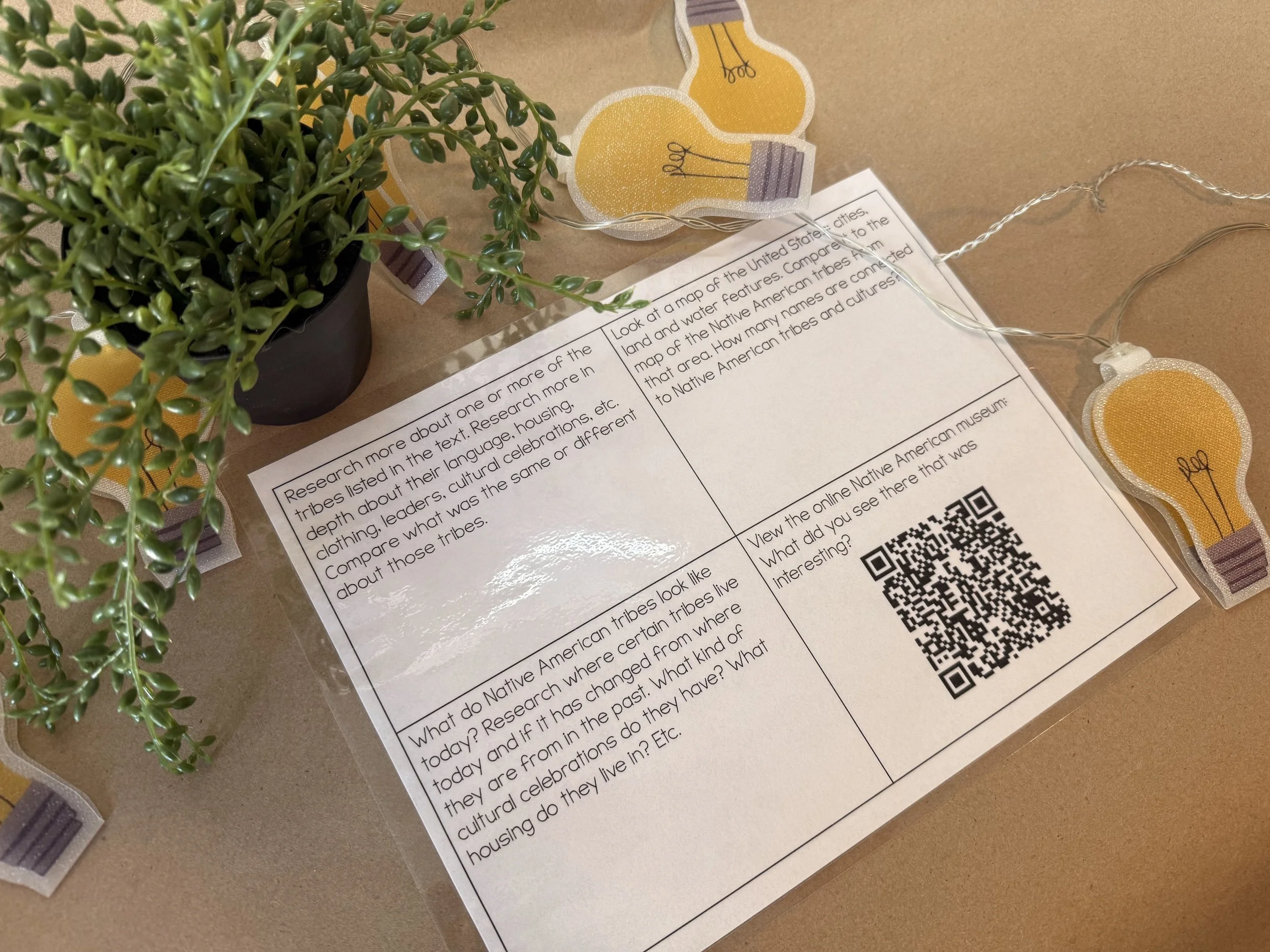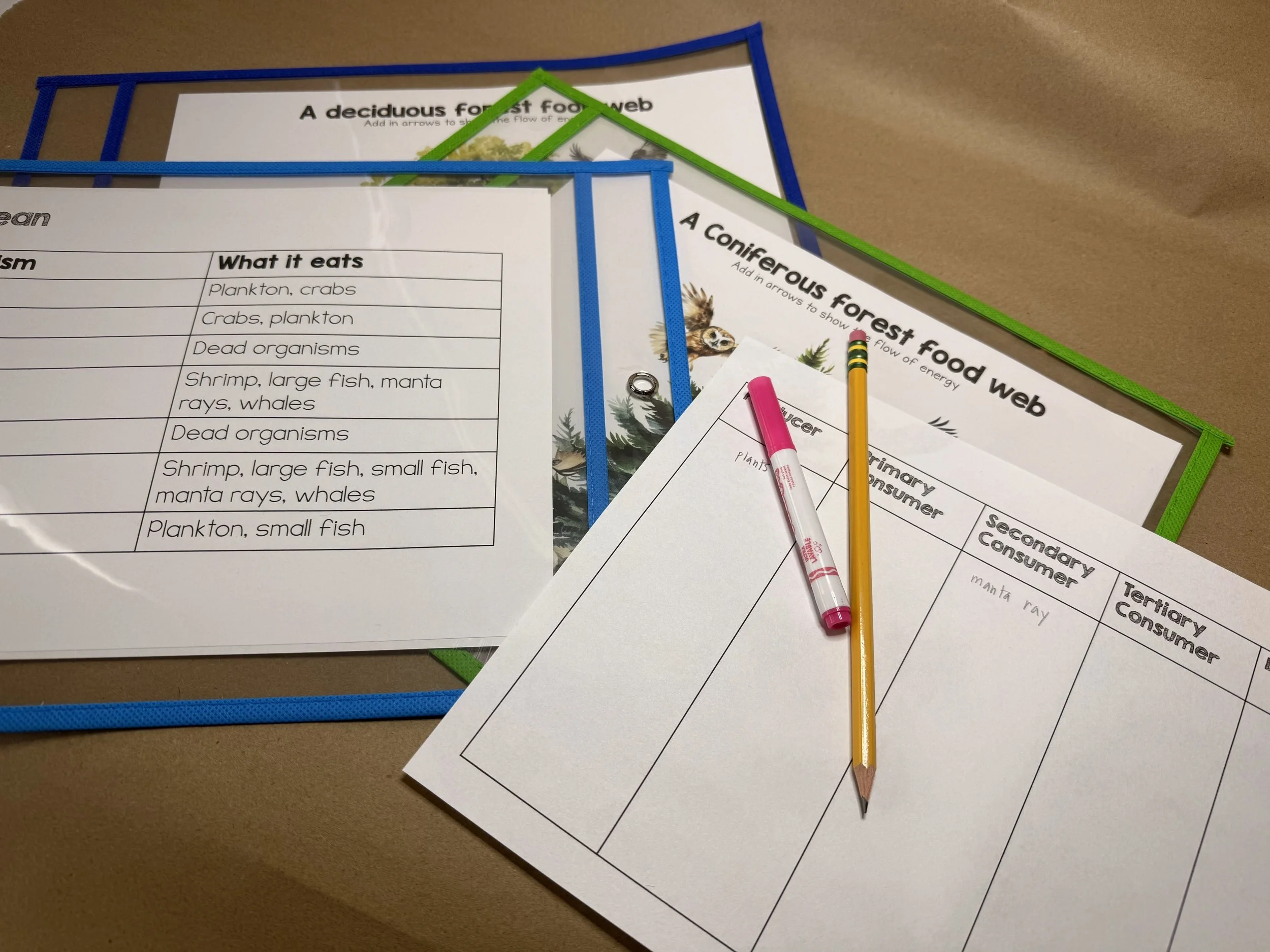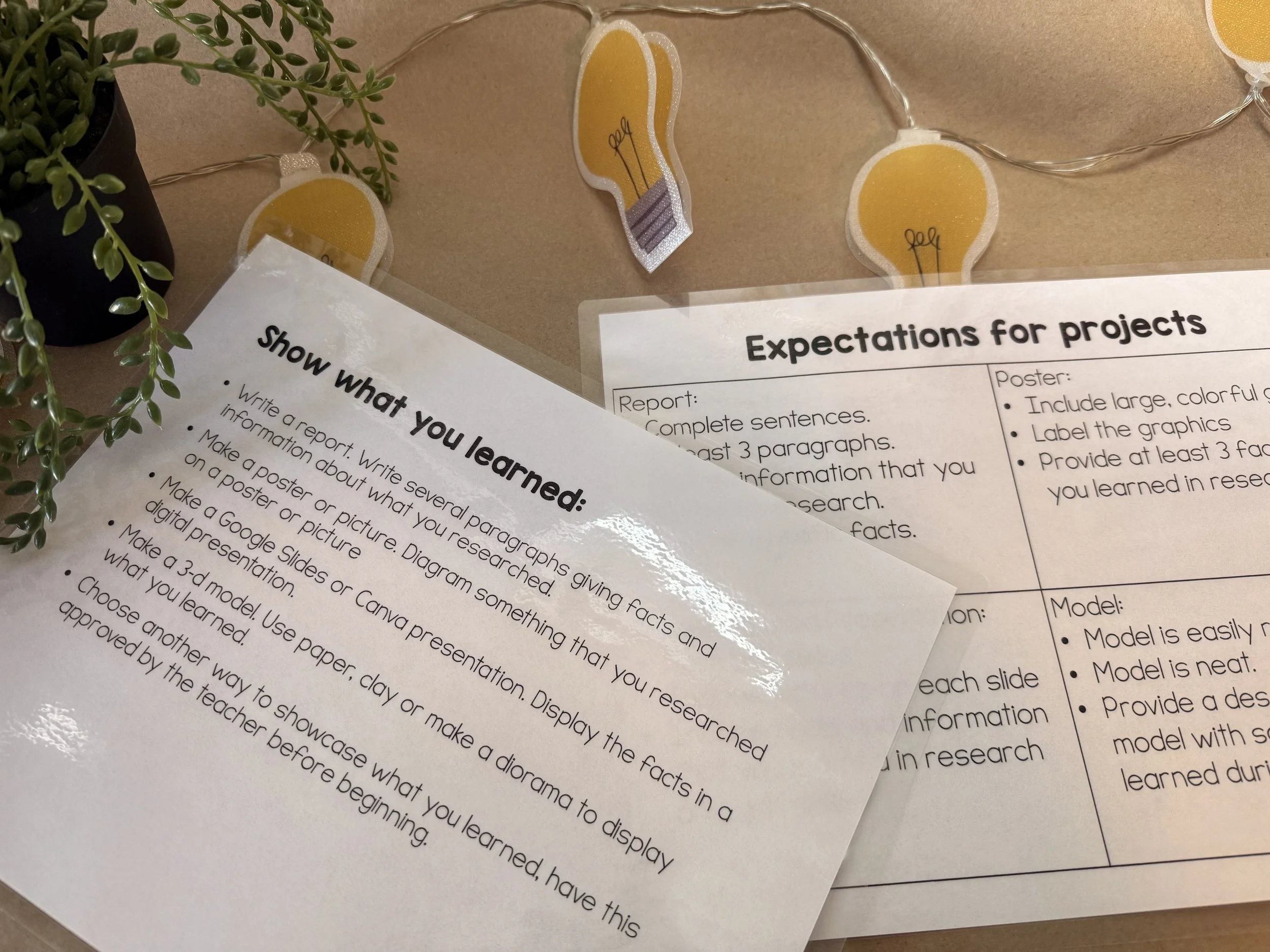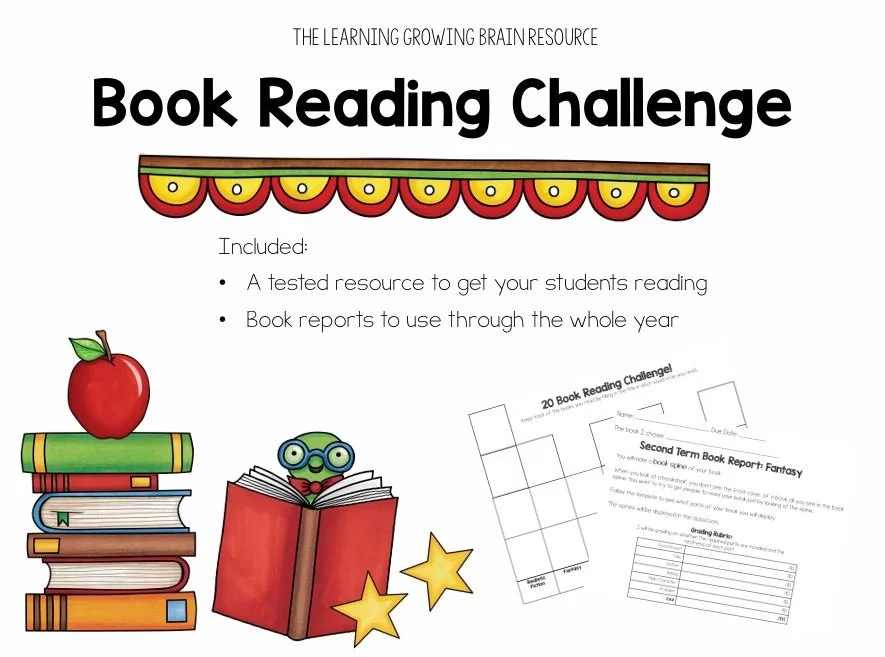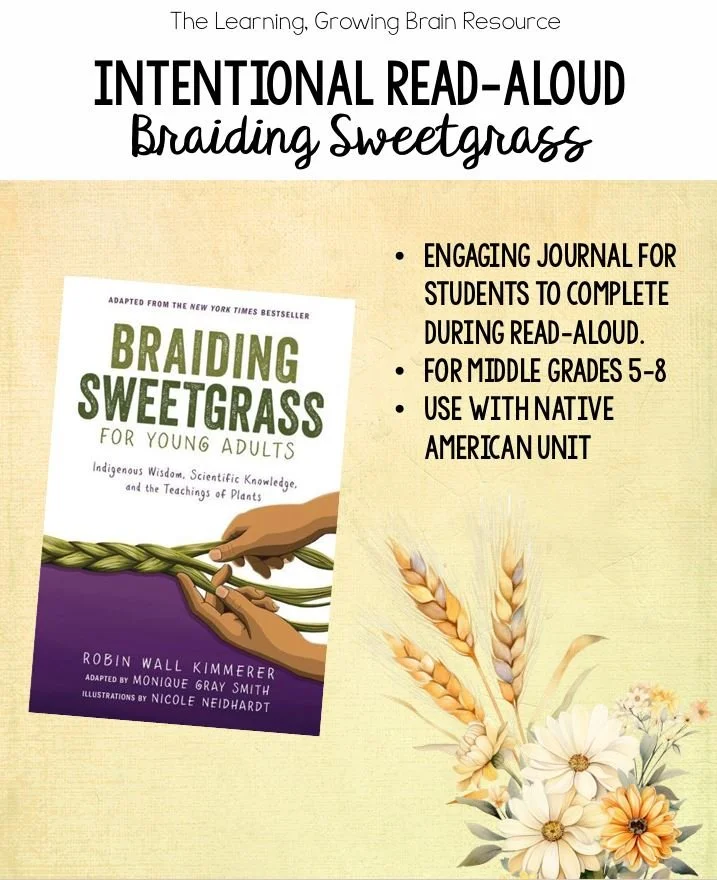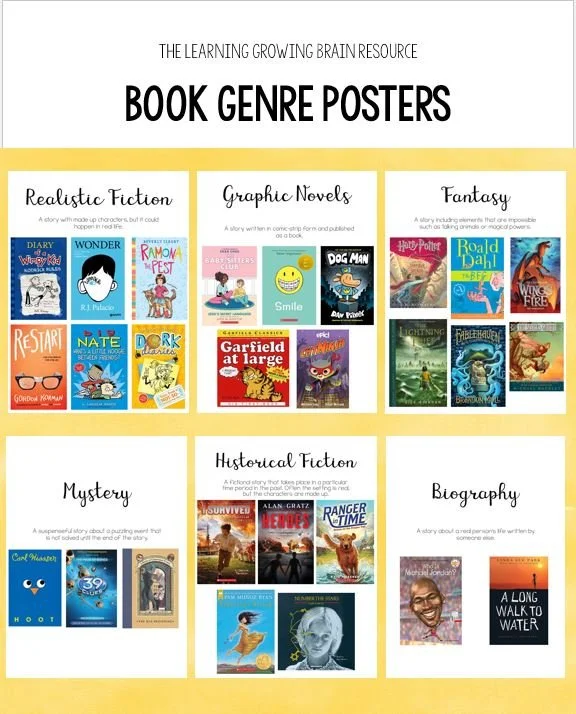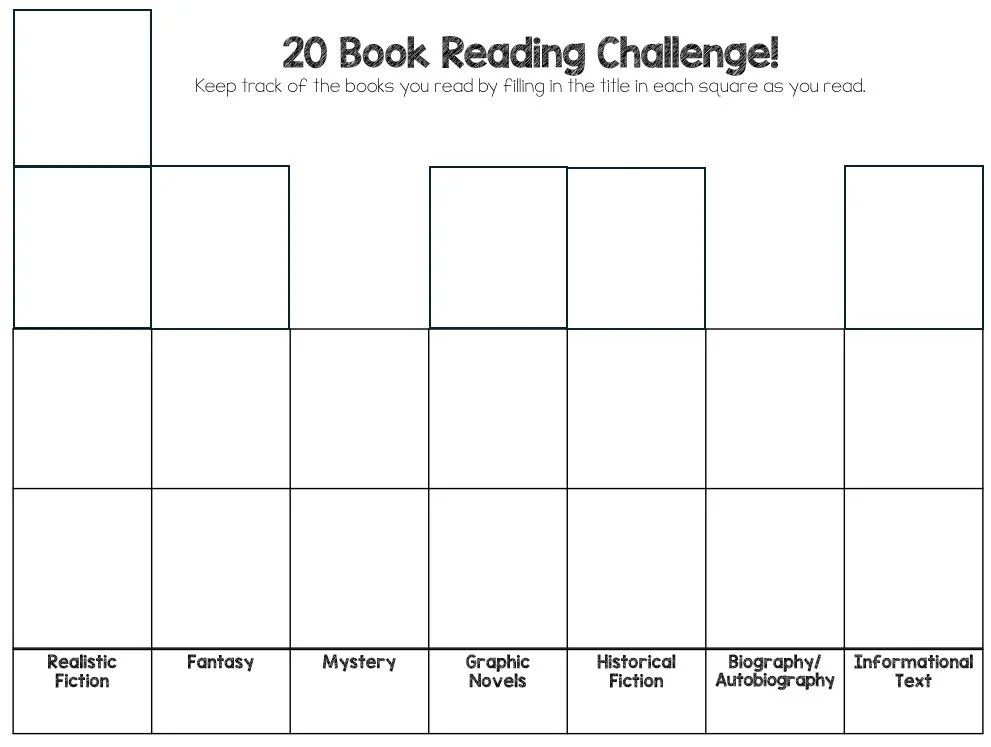Welcome
I’m always looking for ways to engage students in a way that they want to learn. Project based learning is my go-to for the classroom and this space is where I share those ideas and resources that have been successful for me in a middle grades (grades 4-8) classroom.
Structured Project Based learning
Project based learning is a big buzzword around education. I first started trying to do project based lessons about 8 years ago. It was a disaster! I gave the students a guiding question and a couple parameters but that was it. The students were either confused or they were messing around during PBL time. In addition, I was overwhelmed with students needing help and the chaos in the classroom. After that first experience, I honed in and changed how I did PBL and I came up with a system that can work with any lesson. This system is: Teach, Research, Create.
Teach
The first step of the process is teach. This is what we are good at! This is the traditional way that education has been done for years. Students sit at their desks, teachers teach. But this isn’t just a lecture; bring in videos, interactive notebook pages, informational reading stations, etc. We’ve got this. Pro tip * limit this teaching time to 15-20 minutes for your middle grades (5th-8th) more time than that and you start to lose their interest/ attention
Research
The research portion is set up similar to stations. Set up enough stations so that there is only a group of 2-3 students doing each one. So 24 students needs about 8-10 stations. Before beginning research stations I make sure that students understand what research is. This is typically a beginning of the year series of lessons covering topics like: making observations and inferences, how to take notes, finding important information from a website, asking questions about what you are reading, etc. Students bring their notebooks to a research station and will conduct research. The station may be a website that they explore. It may be a book with pictures on the topic. It could be a sort or activity. Below are some examples of research stations that I have used:
Research choice board
Choices of things to research based on the topic of Native Americans. I would count this one paper as four different stations for the students to choose from.
Food webs sort
Sorting organisms from a food web into columns- producer, consumer and decoposer.
Students will get to work on research daily for 15-20 minutes. During this time, they choose one station and stay there the entire time. They do get to choose but they don’t get to bounce around. They should be writing down notes on what they are finding. They also need to write down questions they have as they are working. After researching multiple topics over the course of several day, they will deep dive into one of the topics that they had the most questions about. They will search for the answers to their questions on the internet or in a book from your school library (bring in the librarian to help them find what they need!).
In all the research portion of the project should last about 2 weeks. A daily routine during this research stage would be to teach a topic for 15-20 minutes then research for 15-20 minutes. Keep in mind: the research stations are focused on different topics. For example I can have my food web stations, ecosystem stations and Native American stations all out at once. I try to teach these topics over the course of the two weeks that I have the stations out.
Create
Here comes the fun part! Before you can begin this portion of the project, I will typically have students place their Science notebooks out on their desk open to the research that they did. This should be the research from their deep dive. I will put a star on their notebook showing approval. Only students with stars get to create. All other students will need to redo the research step and will not get to create this time. This may seem harsh but the purpose of this portion of the project is to show what they learned. If they don’t have any notes with new information learned, then they can’t show what they learned. It also serves as motivation to focus on getting research done, not just daydreaming! For those students who are creating, I give the following choice board:
This is the Project part of the project based learning. This works out well because they are doing a project within parameters which eliminates the chaos that happened that first time I set out to do PBL. I let them choose one of four things on the Create choice board: a report or a little book about what they learned, a poster or picture, an online presentation on slides or Canva, a 3-d model (get some air dry clay for this!). If they have another idea in mind of what they want to do, they can ask me and we can discuss what they have in mind.
This project will take 1-2 weeks to create depending on how invested your students are. During this 1-2 weeks I use the whole 40 minute Science period to work on this project. Note: for those students who did not finish the research portion of the project, I let them do 2 research stations a day. If they work hard and get some good research done quickly, then they can do a project. However, I will choose the project for them. It will be something I know they can complete quickly.
Final Presentation
Once students have completed projects then I will typically take a week to do presentations for 10-15 minutes during my Science class period. These presentations are completely optional. I have found that students like to present what they learned/created. They feel like the expert and they have taken pride in their work.
Teach, Research, Create Units
Create your own units by thinking of topics that you want to teach over the course of 2 weeks. I usually focus on Science topics but I have also done Social Studies and math topics as well. You can create your own stations for your research portion or look to my store to find some already made ideas.
Good luck and happy learning!
How to structure an engaging Language Arts Routine
Are your students bored during Language Arts? Are they unengaged? In three simple routines you can engage students in reading daily. By setting this routine at the beginning of the year you can ensure interest in reading all year. The three steps include: whole group cloze reading, small group reading groups and independent reading through a motivational challenge.
Whole group Cloze reading
Let’s face it. We are given a reading curriculum. When talking about fluency, the curriculum gives us what to teach but it doesn’t always tell us how to teach it. Frankly, I’ve tried many different ways of teaching reading; round robin, popcorn reading, reading all together, etc. With all of those methods, not all students were active participants. I wanted all my students to be following along and reading the text. That’s when I found Cloze reading.
What is Cloze reading? Cloze reading is where words are systematically removed while reading and students fill in the missing words. What this looks like: students are using their finger to track in the book what is being read. The teacher is reading aloud, modeling good reading. While reading the teacher will pause on a word in the text and the students will read that word all together. This ensures that they are following along. Throughout the reading the teacher walks around the room to ensure students are tracking.
A couple of pro tips. #1: before reading aloud with the class, read through the text personally and pick out the words you will pause on. Find the important words on the page that lend themselves to the comprehension strategy that you want to highlight. #2: I always get push back when I teach the kids about finger tracking. Teach the kids that it has been scientifically proven that if you finger track you will retain the information that is read better. #3: to encourage students to continue following along I always reward the students that I see responding every time I read. You can also have just the girls call out the words or just the boys and see which group is reading “better” a healthy competition never hurts! #4: choose words to pause on occasionally that are difficult words so that you can have a built in phonics lesson.
Cloze reading is not a comprehension strategy in and of itself but you can imbed comprehension strategies as you read. Find places in the text to pause and ask questions about the text. As you read through the text on your own before, find those places and write out the questions to ask (don’t forget to include those higher level thinking questions). Lots of times your reading program will contain what comprehension strategies to focus on and even give suggestions of questions to ask. If multiple comprehension strategies are given for a lesson- try to focus mostly on one strategy per story. You can still hit on other strategies but have a heavier focus on just one.
Small Group reading
It is important to have students read together to practice the reading skills that were modeled during whole group reading. I begin the year in small reading groups reading small books that are included in my curriculum. As students get tired of those, I move them into novels.
At the beginning of the year, I assess students reading abilities and then make small groups. I make sure to evenly distribute low and middle readers into groups of 3-4. This is important! I don’t want to put all my low reader’s together, the low reader’s need to have group members that know how to read relatively well. My top 4-5 reader’s I will put in a group together. I like to give these high reader’s a challenge with the book they read in order to help them stretch so I don’t integrate them with the low and middle readers. Make sure your groups are compatible. I only change groups once a year! I do this because novels take longer to read and I want to make sure they have plenty of time with the group to complete a novel. If a group completes one book can move onto another book. I will typically give them a break between novels with 1-2 weeks on a computer program to break it up a little.
Day to day students will sit in their small groups. Establish norms of what this looks like before beginning. For example maybe everyone brings a chair and they sit together in a circle; maybe your desks are in small groups and each group sits at a different table; maybe they sit on the floor in a circle. Everyone follows along in their book. Each student reads a paragraph. If there is a lot of dialogue in the book, I have them read a whole page. NOTE: you may need to teach students what a paragraph is and how they know when to start and stop their turn. I usually have them read for 20 minutes and then take 5-10 minutes to look at their reader’s notebook and work in that. (Learn more about readers notebooks in this blog post) We do this daily.
What is the teacher doing during this time? A lot of the time I will walk amongst the groups and listen to each group in turn every day. Some days I will spend my entire time with one group. Sometimes I will pull a student aside to help them independently. It honestly depends on how well the groups are working together.
Independent reading
I always give students time every day to read on their own. They have the opportunity to choose what they want and they are given the time to read it.
Oftentimes students may not want to read during this time and will try to take a nap, draw, clean their desk or do basically anything to avoid reading. If this is the case in your classroom you should try motivating them with the 20 book reading challenge.
This reading challenge not only motivates students to read but also it gets them reaching outside their comfort zone and reading different genres. If you want to read more about this, look at this blog post.
Read aloud
With so many things pressing on our schedules is it really important to make time for read aloud? I believe the answer is yes! It is a relaxing time for students to be interested in a book. I choose books that are above their reading level. That way they can be exposed to complicated vocabulary words and story lines. During read aloud I typically will demonstrate metacognition. I do this by talking aloud what I’m thinking about the book in order to show comprehension skills.
Read aloud is meant to be a relaxing, hands off time for students. I always have “thinking putty” available (kinetic sand, silly putty, etc.). Students are allowed to play with the putty while I read. Students may also draw or use watercolors at their desk during read aloud. I may also give them a “coloring book” to work in while I read. These coloring books are what I call an intentional read aloud. This is a low key way to get the kids more involved in the text. Find them in my store.
A proven way to get kids interested in reading all year
Do you struggle to get your students reading during independent reading time? Have you all but given up on independent reading? Do your students just goof around when they are supposed to be reading? Believe me I’ve been there. The experts say that best practices are to give your students 15-20 minutes every day to read independently. For many years this time turned into more of a free time for students. They were unmotivated to read and more interested in visiting the bathroom, cleaning their desk, drawing or anything else except read!
The reading Challenge
The last couple of years I have introduced the reading challenge and this has been the best motivation to get my students reading. Not only reading but choosing all different types of books to read. Here is the challenge: read 20 books during the year in different genres. Here is the kicker that motivates the students. The students who read 5 books during the term, they get to come to an end of term party.
Also included in this challenge is 4 book reports (one per term) that students complete. These book reports can be completed at home or in class and they are for a grade.
Introduce the challenge
Before school even starts, I prep my classroom to be ready for the challenge. I organize my books by genre in my classroom library. You can do this by putting different genres in different bins. You can also label your books with labels indicating the genre. I also set up a bulletin board with posters of the different genres in the challenge. These posters have some of the popular books for the grades 4-8. I make sure I have the books from the posters in my library or I make sure they are available to check out from the school library. Grab my posters for free here.
During the first week of school I give my students the book challenge graph found in my resource. This shows them exactly what they need to read. I copy this on a bright piece of paper so they can’t miss it and have them glue it into their Language Arts notebook. There are a couple of other reference pages in my resource that you can give out at this time as well. One is a reference page that is a description of each genre. One page is where they write summaries of the books they read.
Explain to the students that they can read five books during the first term of any genre. What I count: reading a book themselves, audiobooks, reading a book in their small reading groups in class, having a parent read to them. What I don’t count: novels we read together, books less than 80 pages, picture books, books they have read or listened to in previous years, movies they watched that are based on books. I explain the rules to them and as they read they will track the books on their graph writing the full title of the book. They will also write a summary of the book. You can use the summary pages for this or you can have them write the summaries on a regular piece of paper.
Students start reading. The first place they look for books is on the book shelf in our classroom. Although they may read books from home or books from the library. There are many times that I will also go with them to the library to help them choose books. This is especially important when I see that the same students are always at the classroom library looking for books. Only in the last term of the year when they have exhausted the books from our classroom library and from the school library do I let them read on Epic.
Give books a try
I always run into the problem of students never finding a book they are interested in. They get up every independent reading time and look for a new book. If this is the case, I give these students a graphic novel to read. This genre is typically more engaging. If they already read all their graphic novels for their graph, I will allow just them to count it for a different genre. The important thing is that they are reading! I may also have an indecisive reader choose a book and read at least 10 pages of that book. If they don’t like it at that point, then they can choose another book.
End of term Parties
The motivation for students is the opportunity to participate in the end of term party. The first term I have a root beer float party, the second is a hot chocolate party (with all the goodies to go on top), the third term is a ice cream sundae party and the fourth term is a pizza party. These parties are usually during lunch and they get to stay in the classroom to eat and get their goodies. In order to qualify for the party, I conference with each student a week or two before the end of term. This is a 5-10 minute conference and I will do this during our small group reading period. The student will show me their graph. They should have 5 books written down. I will put my initials next to five of the books. If they have read more, then just sign off on five and leave the extras for the next end of term party. I then look at their summary page or have them orally tell me about the book in order to qualify. Some students may not want to come to every end of term party or may not have enough books read for the party, if this is the case, I do not conference with them and I will conference with them when they have 5 books read.
Book reports
Another portion of this year long project is the books reports. For each term I choose a different genre book and a project to do with that book. I give the instructions to the kids at the beginning of each term so they can get started right away reading a book. I allow students to either complete this in class or at home. I will always send home a copy of the project so that parents are aware of the book report for the term. While the book graph is NOT a grade, the book reports are a grade. This tends to be a motivation for some kids to read. These books read for the book report can also count on the book graph.
Conclusion
This challenge motivates students to read. Even if students come into class loving to read, this challenge helps them to explore other genres of books. It makes reading fun and exciting and creates a culture of readers in the classroom. Silent reading is a time that they are excited about and library time becomes more meaningful as well. Do I still have reluctant readers in the classroom? Sure I do but the even the reluctant readers will often read more than they ever have in the past. Grab the challenge here and get your class ready to be a classroom of readers this year!
An Immersive, engaging approach to teaching History and Language Arts
Engagement is Key!
Getting students to engage with the curriculum is one of the hardest things about education today. There are so many things that students are more interested in. Lectures don’t hold their attention, videos are usually outdated and worksheets are just seen as busy work. Letting students learn in a truly engaging way is the ultimate goal. Enter… reader’s notebooks.
What are Reader’s notebooks
Each reader’s notebook is based on a children’s novel. The notebook is filled with graphics to color and comprehension questions to answer. Depending on the ability of your students, you may have them just draw a picture to represent their thoughts or they can write short or long responses for each page of the notebook. A reader’s notebook can be used during whole group instruction; in small reading groups or during independent reading time.
Introducing Reader’s notebooks
At the beginning of the year I will choose one novel to read as a whole class. I will purchase one novel per student and I will copy the corresponding reader’s notebook to go with that novel. Each student will get a novel and a reader’s notebook. I will read the novel aloud as the students follow along in their own book using finger tracking. Throughout the reading I will pause occasionally on a word and the students will read the word that I paused on. This helps to keep them engaged and it also models good reading. As we move through the text we will look to our reader’s notebook for the different questions to answer. I will model how they are to be answered. The reading of this novel is highly guided. Every step of the way I model what I do and how I think as I engage with the novel and the reader’s notebook. During this stage everyone is writing the same this in their notebook.
Using Reader’s notebooks throughout the year
After the initial novel is read, I then have students read in small groups using the same process. I assess students reading abilities and then make small groups. I make sure to evenly distribute low and middle readers into groups of 3-4. This is important! I don’t want to put all my low reader’s together, the low reader’s need to have group members that know how to read relatively well. My top 4-5 reader’s I will put in a group together. I like to give these high reader’s a challenge with the book they read in order to help them stretch so I don’t integrate them with the low and middle readers. Make sure your groups are compatible. This is another reason I like to read the first novel together whole group, this gives me time to get to know my students and understand who will work well together. I only change groups once a year! I do this because novels take longer to read and I want to make sure they have plenty of time with the group to complete a novel. If a group completes one book can move onto another book. I will typically give them a break between novels with 1-2 weeks on a computer program to break it up a little.
Day to day students will sit in their small groups. Establish norms of what this looks like before beginning. For example maybe everyone brings a chair and they sit together in a circle; maybe your desks are in small groups and each group sits at a different table; maybe they sit on the floor in a circle. Everyone follows along in their book. Each student reads a paragraph. If there is a lot of dialogue, I have them read a whole page. NOTE: you may need to teach students what a paragraph is and how they know when to start and stop their turn. I usually have them read for 20 minutes and then take 5-10 minutes to look at their notebook and work in that. We do this daily.
What is the teacher doing during this time? A lot of the time I will walk amongst the groups and listen to each group in turn every day. Some days I will spend my entire time with one group. Sometimes I will pull a student aside to help them independently. It honestly depends on how well the groups are working together.
How this engages in history
All the reader’s notebooks are for historical fiction novels. I have found that if students can read about a character in history, they can feel immersed in that story and are highly engaged. Providing a beautiful, flexible resource for them to use while reading the novel takes the pressure off of the student to answer all the questions correctly. Many students connect with art and using a coloring book helps them engage with something they love.
Differentiation with Reader’s notebooks
Differentiation is embedded with reader’s notebooks. There is open space on each page students can choose to draw their answer, answer with one or two words or answer in complete sentences. This does not mean that students should just try and get away with doing the bare minimum. You can approach each group and guide them with how they should respond in the notebook. If one student is not meeting that expectation take them aside and talk with them.
Another way to differentiate is each unit has four books. One that is a lower level, two middle level books and one challenging book. In my first unit on Native Americans, The easiest book and reader's notebook will be Sees Behind Trees. The middle level books and reader's notebooks are Sign of the Beaver and Children of the Longhouse. The most difficult book will be The Birchbark House. The questions in each reader's notebook are designed with the level of that book in mind.
Units
As I create units, they will be added into my shop. I will focus on US history for my first several units and then move to world history. Good luck and Happy Reading!
